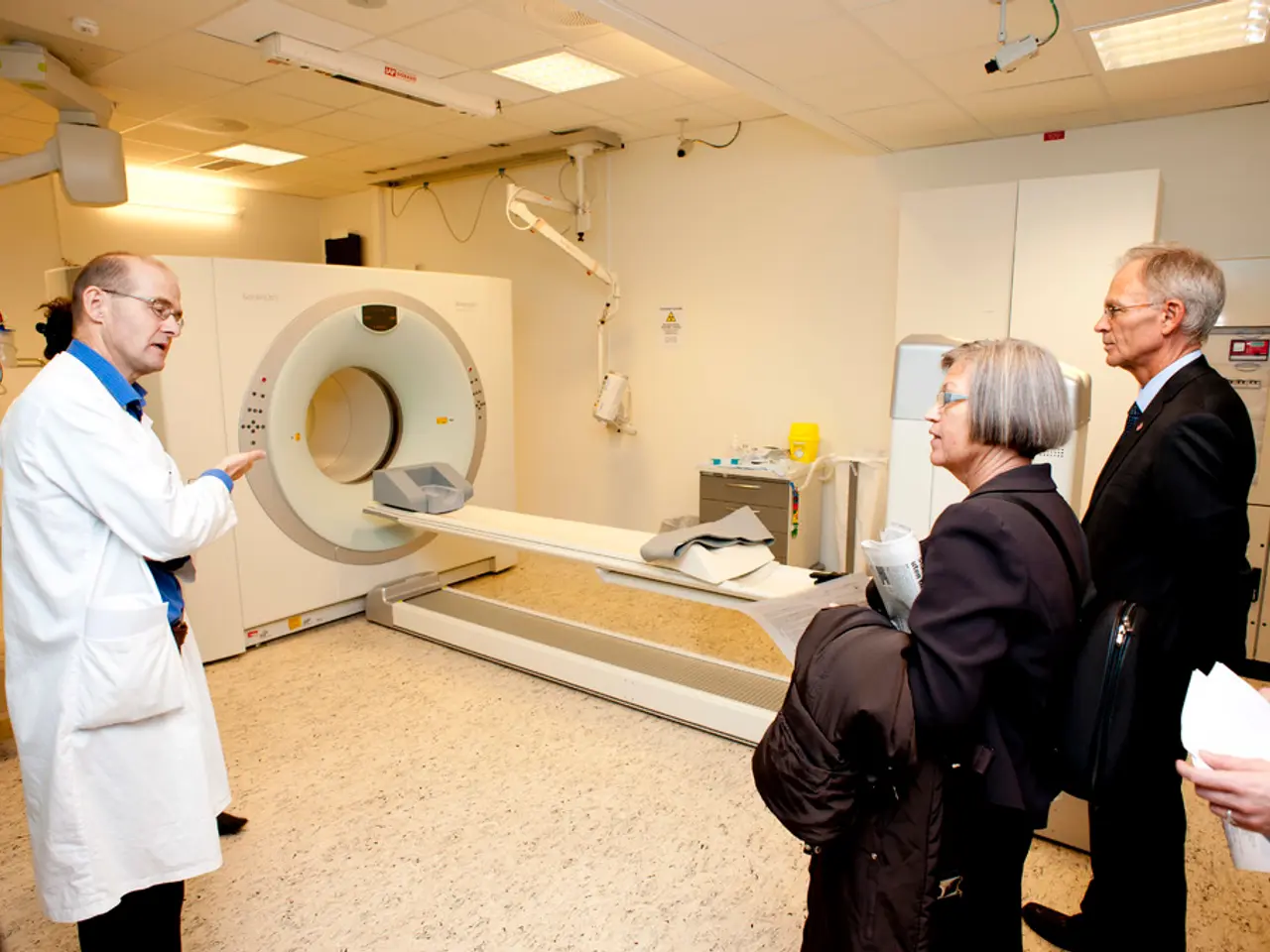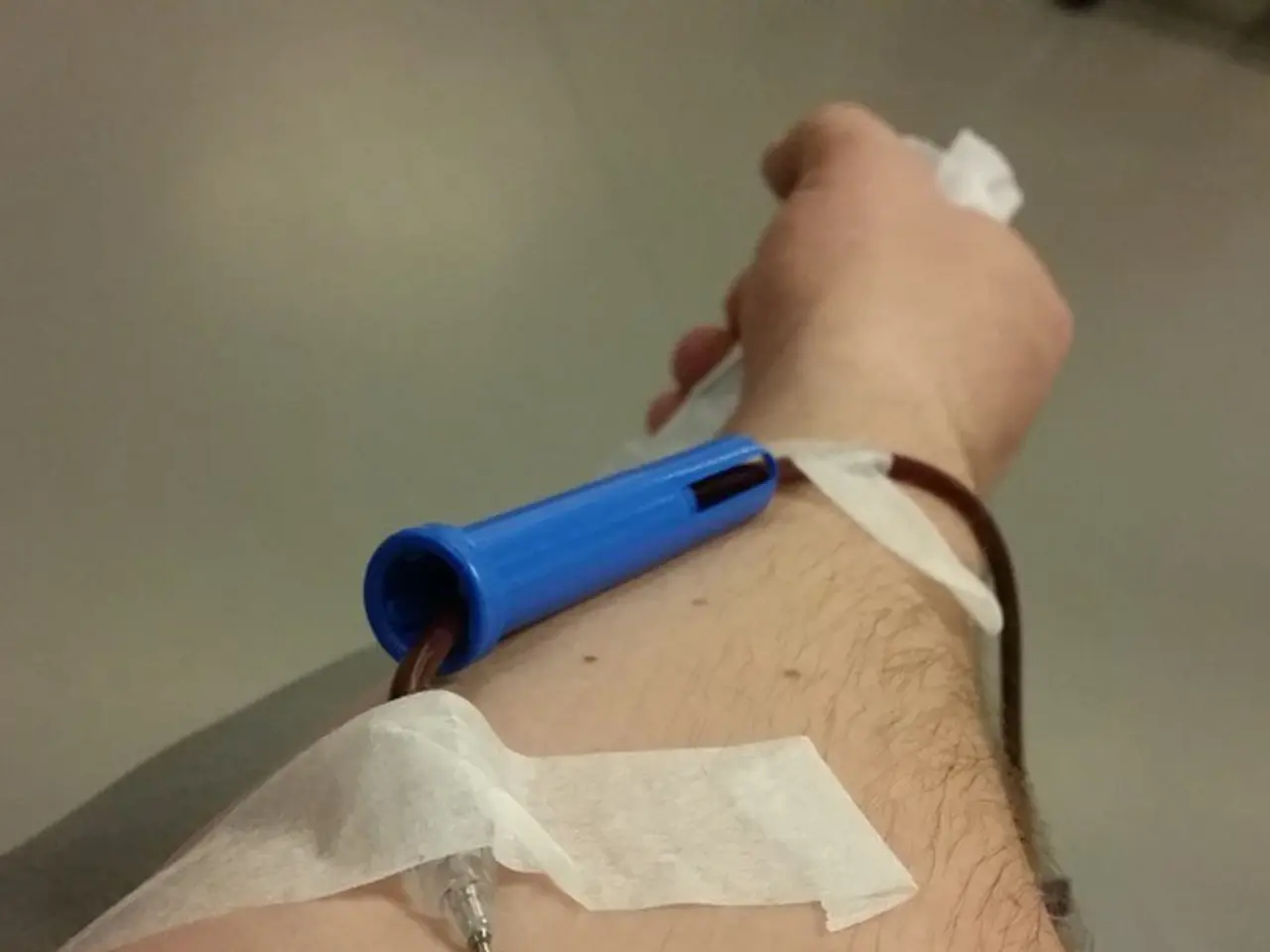Medical Imaging Analysis: Procedures, Risks, Outcomes, and Purposes of a Cerebral CT Scan
In the realm of medical imaging, CT (Computed Tomography) head scans have proven to be a crucial tool for diagnosing a variety of brain-related conditions, particularly in emergency situations. This article aims to shed light on the purpose, benefits, and procedures associated with a CT head scan.
A CT head scan is often ordered by a doctor to provide detailed images of the brain, which can be crucial in emergency situations when quick diagnosis is essential. Common reasons for a CT head scan include assessing head trauma, stroke-like symptoms, brain tumors, birth conditions, hydrocephalus, and brain abnormalities [1].
One example of a condition that a CT head scan can help diagnose is a subarachnoid hemorrhage, which can be signalled by a sudden, severe headache. Other symptoms such as loss of consciousness, sudden neurological symptoms, head injury, suspected stroke, persistent headaches or dizziness, and post-accident evaluation may also prompt a CT head scan [1][2].
The process of a CT head scan involves the use of X-rays to create a 3D image of the skull, brain, and related areas. The scan itself is usually no louder than a vacuum cleaner and takes no more than 10 minutes [3]. However, some people may experience anxiety or feel claustrophobic due to the circle-shaped machine used for the scan, which has an open design to help alleviate these feelings [3]. In some cases, sedating medicines may be administered to help calm the patient.
It is worth noting that an MRI scan, while it does not expose a person to radiation, can show soft tissues hidden in a CT scan. Doctors consider the benefits of each scan when deciding which one to use for scanning the head, taking into account factors like cost, speed, and the presence of metal devices [4].
CT scans may require the use of contrast dye to make certain areas show up more easily. While this can help improve the quality of the images, it does come with a minimal risk of causing allergic reactions or temporary unpleasant symptoms [4]. Some people may need to refrain from taking metformin for a few days before a CT scan with contrast dye due to potential severe reactions.
In the case of children, doctors adjust CT scanner settings to deliver the lowest possible radiation dose. Children who have experienced recent injury or have a history of skull or brain abnormalities may require a CT head scan [5]. In some cases, anesthesia may be necessary for children who cannot remain still during the scan.
It is important to note that there is a minimal risk of developing cancer from a single CT head scan [6]. However, in pregnancy, doctors usually advise women to avoid CT scans, although the risks can be discussed.
Once the scan is complete, a radiologist examines the images for any abnormalities and writes a report. If the results are non-emergency, they will be sent to the ordering doctor for further action [7]. In emergency situations, the results are reported quickly to guide immediate treatment decisions.
In conclusion, CT head scans play a vital role in the medical field, providing detailed images of the brain that can aid in quick diagnosis and treatment decisions. As with any medical procedure, it is essential to discuss any concerns with a healthcare professional.
- A CT head scan, essential in emergency diagnoses, can help identify brain-related conditions like head trauma, stroke-like symptoms, brain tumors, hydrocephalus, and brain abnormalities (including subarachnoid hemorrhage).
- In non-emergency situations, signs such as sudden severe headache, loss of consciousness, neurological symptoms, suspected stroke, persistent headaches or dizziness, head injury, and post-accident evaluation can prompt the ordering of a CT head scan.
- The CT head scan process involves using X-rays to create a 3D image of the skull, brain, and related areas. Although some may experience anxiety or claustrophobia due to the circle-shaped machine, X-ray levels are similar to a vacuum cleaner, and the scan takes no more than 10 minutes.
- MRI scans, while lack radiation, can show soft tissues hidden in a CT scan. However, doctors may choose the appropriate scan based on factors like cost, speed, and the presence of metal devices.
- When using contrast dye during a CT head scan, there is a minimal risk of causing allergic reactions or temporary unpleasant symptoms. Modifying CT scanner settings for children helps deliver the lowest possible radiation dose.
- Though there is a minimal risk of developing cancer from a single CT head scan, pregnant women are typically advised to avoid these scans, with risks being discussed on a case-by-case basis. After the scan, a radiologist examines the images, reports any abnormalities, and writes a report, which is then sent to the ordering doctor for further action.




